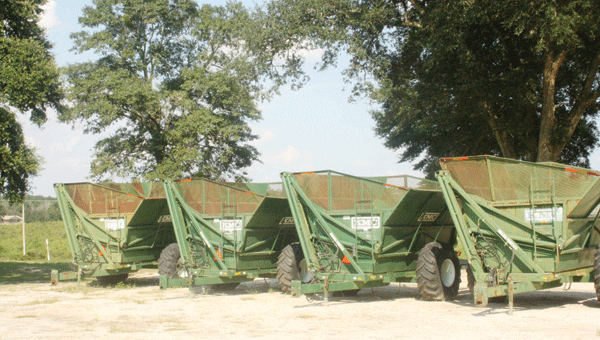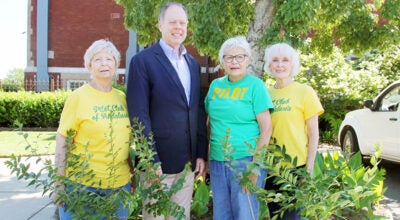Good or bad year for crops?
Published 12:00 am Thursday, September 5, 2013
Rain cuts yield on hay, time will tell on peanuts, cotton
A week from today, local farmers will conduct a countywide tour of area operations and get a firsthand view of how much recent rains have affected this year’s crops.
Rainfall reports gathered at the Yellow River Bridge and reported by the Choctawhatchee, Pea and Yellow Rivers Watershed Management Authority show that in June, 9.86 inches was recorded, followed by 8.88 in July and 7.4 inches in August – making it one of the wettest summers on record.
Charles “Chuck” Simon, county extension agent, said Wednesday that rain will play a huge role in crop yields for the county’s hay, cotton and peanut farmers.
“From what we can tell, we’re looking at a 40 percent loss or more on the hay crop,” he said. “What happens is, you want to cut young grass and get several cuttings in a season. As grass matures, the quality goes down. Now, in order to keep up the cattle’s energy level because of this year’s hay quality, they’ll have to supplement with corn or cotton seed or have to plant a winter grazing crop.”
As for the cotton crop, estimates show at least a third of the county’s crop is a loss, Simon said.
“We won’t know that for a fact until it’s harvested, but (the crop) could pull itself out,” he said. “We’ll have to see.”
At next week’s tour, the Alabama Farmer’s Federation and local farmers will meet to view area farms.
“Then, we’ll be able to compare each other’s fields and get a feel of what’s happening countywide,” Simon said.
A few days ago, Glen Zorn, assistant Alabama Department of Agriculture and Industries commissioner and a Florala farmer, told media outlets, “What we need now is sunshine. We also need a good, orderly harvest.”
Zorn said that record rainfall this summer had created a number of problems for farmers, including making spraying for disease and weeds impractical. As a result, peanut production will be impacted. Despite the weather-related losses, peanut farmers in Alabama are set for what officials are calling an average crop.
“It’s somewhat of a mixed bag,” Zorn said.
Production was already expected to be down prior to the excessive rain. According to the USDA’s August Crop Production Report, farmers planted fewer acres of peanuts this year compared to last year. The USDA estimates that peanut production is down 55 percent.
Simon said wet conditions are preventing farmers from making into the fields, but at Andalusia’s Bird Song Peanut Co., staff are making the necessary preparations for the season – whatever it maybe.
“We’re slow now, but that will change soon,” said Kathy Smith.





